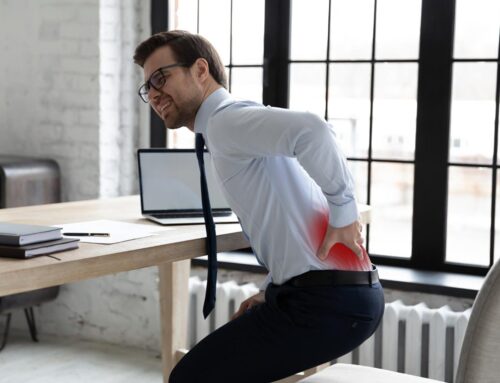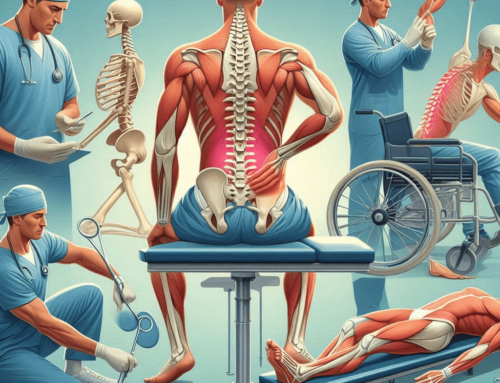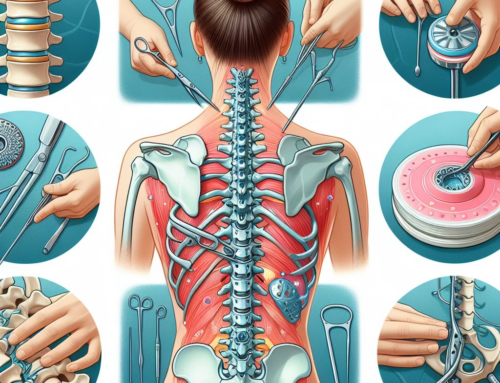Slipped disks, also known as herniated or ruptured disks, can cause significant pain and discomfort, impacting daily life. However, with the right treatment approach, pain relief and recovery are achievable. This article delves into the effective treatments for slipped disks, providing insights into non-surgical and surgical options, and offering guidance on how to manage and alleviate pain.
Understanding Slipped Disks
What is a Slipped Disk?
A slipped disk occurs when the inner gel-like core of a spinal disk pushes through a tear in the outer layer. This condition can compress nearby nerves, leading to pain, numbness, or weakness in the back, neck, and limbs.
Common Causes
- Degenerative Disk Disease: Age-related wear and tear on the spinal disks.
- Injury or Trauma: Sudden impact or lifting heavy objects improperly.
- Genetic Factors: A family history of spinal conditions can increase susceptibility.
- Repetitive Strain: Repeated movements that stress the spine over time.
Symptoms of a Slipped Disk
Recognizing the Signs
- Back Pain: Persistent or intermittent pain in the lower back or neck.
- Radiating Pain: Pain that extends to the arms or legs, often described as sharp or burning.
- Numbness or Tingling: Sensations in the affected areas due to nerve compression.
- Muscle Weakness: Reduced strength in the muscles served by the affected nerves.
Non-Surgical Treatments
Initial Conservative Approaches
Rest and Activity Modification
Avoid activities that exacerbate pain and allow the spine to rest. Gradual return to normal activities is encouraged as pain decreases.
Pain Management
- Over-the-Counter Medications: Nonsteroidal anti-inflammatory drugs (NSAIDs) like ibuprofen can reduce inflammation and pain.
- Prescription Medications: For severe pain, doctors may prescribe stronger pain relievers or muscle relaxants.
Physical Therapy
Exercise Programs
Physical therapists design specific exercise regimens to strengthen the muscles supporting the spine, improve flexibility, and reduce pain.
Manual Therapy
Techniques such as spinal manipulation, massage, and mobilization can alleviate pain and improve mobility.
Heat and Cold Therapy
Applying heat can relax muscles and improve blood flow, while cold therapy reduces inflammation and numbs pain.
Also read Empowering Your Backbone: A Comprehensive Guide to Spine Treatments
Advanced Non-Surgical Treatments
Injections and Alternative Therapies
Epidural Steroid Injections
Corticosteroid injections administered directly into the epidural space can reduce inflammation and alleviate pain.
Nerve Blocks
Nerve blocks involve injecting anesthetic near the affected nerve to provide temporary pain relief.
Chiropractic Care
Chiropractors use spinal adjustments and other techniques to relieve pressure on the nerves and improve spinal function.
Acupuncture
Acupuncture involves inserting thin needles into specific points on the body to stimulate nerves and alleviate pain.
Surgical Treatments
When Surgery is Necessary
Indications for Surgery
Surgery is considered when conservative treatments fail to provide relief, or if there is severe nerve compression causing significant weakness or loss of function.
Types of Surgical Procedures
Discectomy
A discectomy involves removing the herniated portion of the disk to relieve nerve pressure. This procedure can be performed using minimally invasive techniques.
Laminectomy
A laminectomy involves removing a portion of the vertebra (the lamina) to widen the spinal canal and relieve pressure on the spinal cord and nerves.
Spinal Fusion
Spinal fusion involves joining two or more vertebrae to stabilize the spine and prevent movement that could cause pain. This procedure is often combined with a discectomy or laminectomy.
Also read The Art and Science of Spine Rehabilitation: Strategies for Success
Post-Treatment and Recovery
Rehabilitation and Follow-Up
Physical Therapy
Post-surgery or post-treatment physical therapy is crucial for regaining strength, flexibility, and functionality.
Lifestyle Modifications
- Ergonomics: Using proper posture and ergonomic equipment to reduce strain on the spine.
- Weight Management: Maintaining a healthy weight to reduce stress on the spinal disks.
- Regular Exercise: Engaging in regular, low-impact exercise to keep the spine healthy and flexible.
Monitoring and Long-Term Care
Regular follow-up appointments with healthcare providers ensure proper healing and address any recurring issues promptly.
Conclusion: From Pain to Relief
Understanding and exploring the various treatments for slipped disks can significantly improve outcomes and quality of life for those affected. By combining non-surgical and surgical approaches with proper rehabilitation and lifestyle modifications, individuals can achieve lasting pain relief and regain their normal activities.
Note: We are also on WhatsApp, LinkedIn, and telegram, to get the latest news updates, Join our Channels. WhatsApp– Click here, to telegram – Click Here, and for LinkedIn– Click Here.





Get Social